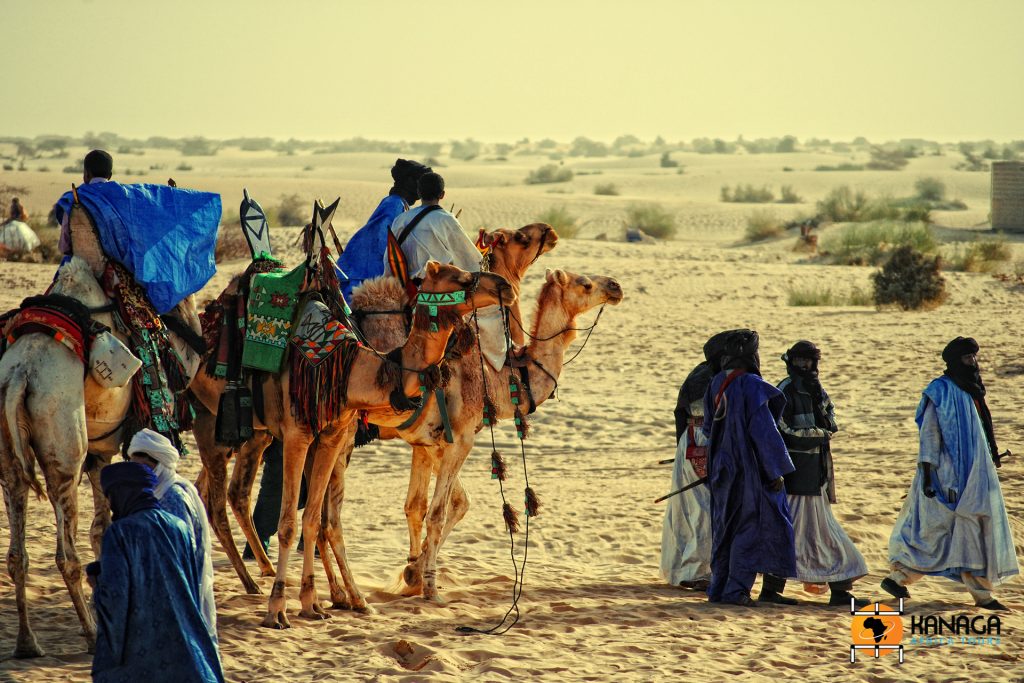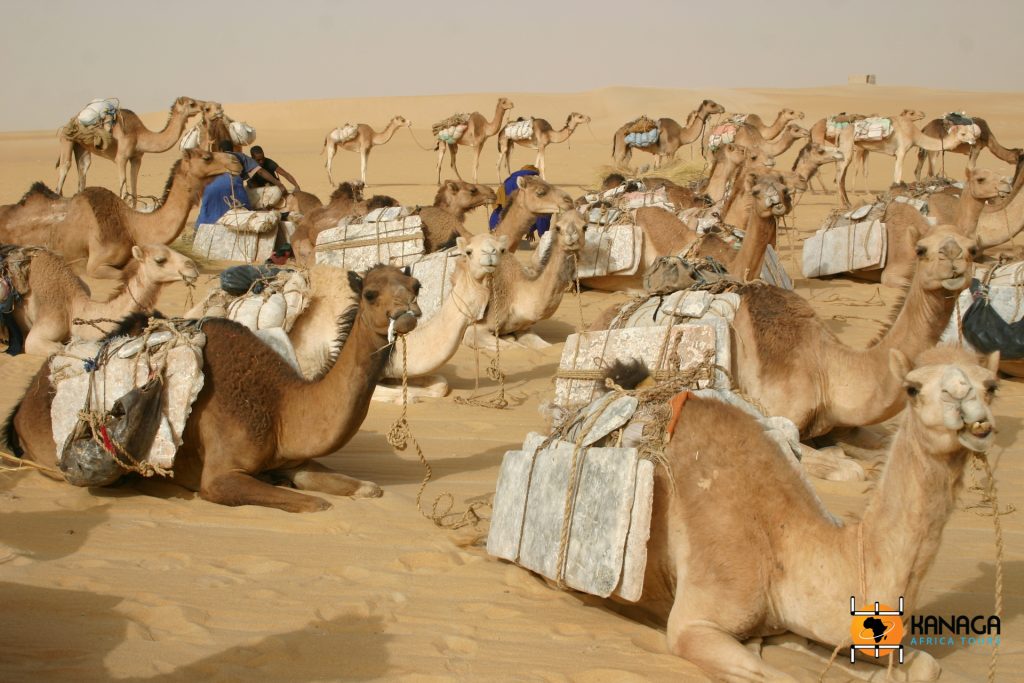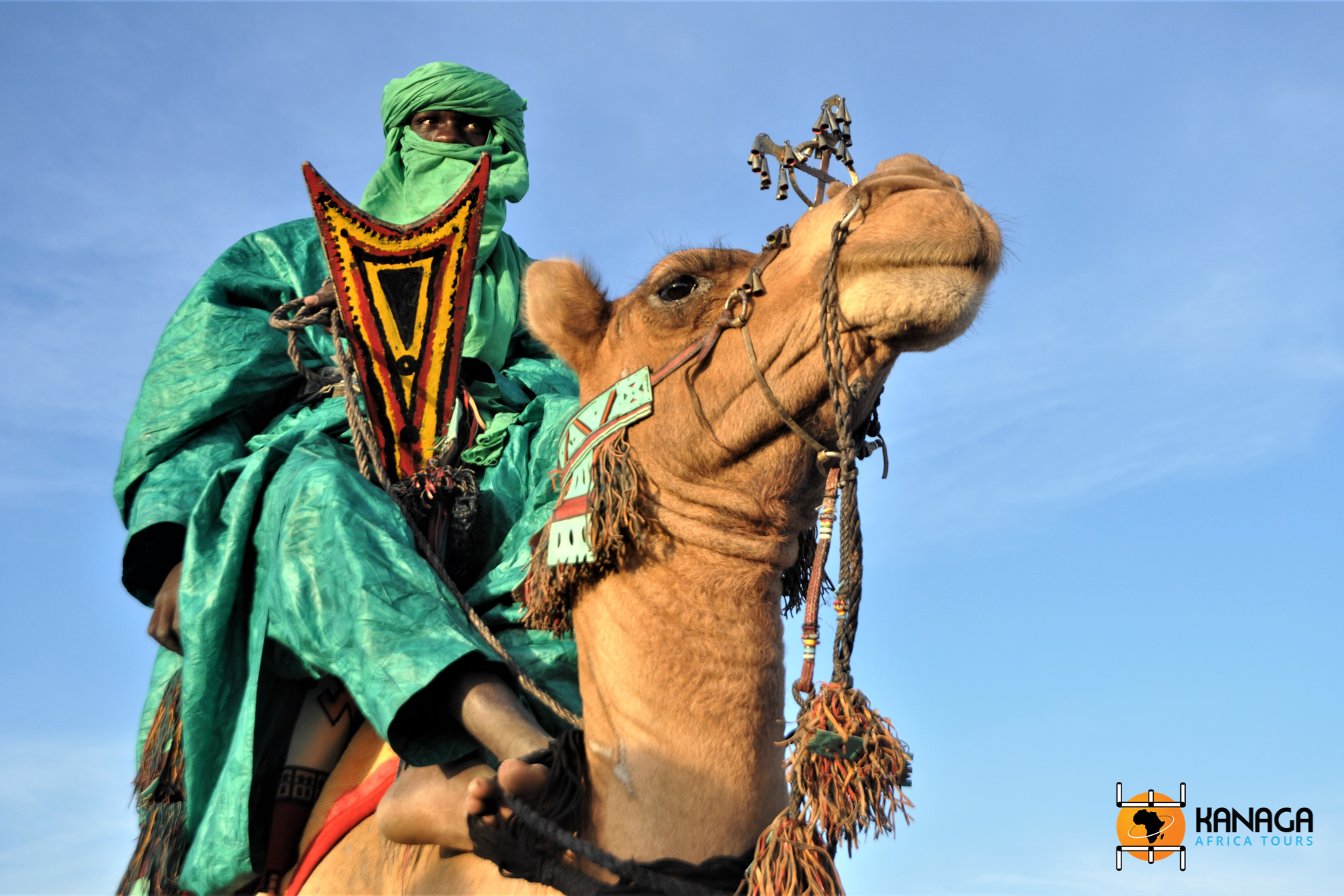© L.F. Paoluzzi
A legendary city, the myth of Timbuktu resonates everywhere. The gateway to the desert, where 333 saints stayed, it was founded, according to tradition, by a mysterious Tuareg woman in search of water for her dromedaries, who made her fortune around the well that is now housed in the city museum, in the heart of the historic quarters.
From then on, the well became a compulsory destination for desert caravans exchanging gold and slaves for water. In 1275 it was annexed to the Mali Empire and at the beginning of the 14th century Kankan Mansa Moussa (universally recognised as the richest man of all time), on his return from a pilgrimage to Mecca, had the Djingareiber Mosque, one of the oldest and most famous in West Africa, built there to the tune of gold ingots. During the dynasty of Sonni Ali Ber and the Songhay Empire, in the 15th century, as well as being a rich centre for trans-Saharan trade in gold, slaves and salt, it was also an important centre for Islamic culture and the Sankoré Mosque in the 16th century became the seat of the most important and renowned Koranic university.
By the time the first European explorers began to arrive in the 19th century, its former glory was a distant memory, but its fame was still intact. The first explorer to arrive in Timbuktu, and to survive to tell the tale, was René Caillé in 1828, before which Mungo Park was not allowed to travel up the canal from Korioume to Timbuktu, while Gordon Laing, who arrived in 1826, was massacred by the Tuareg before he could leave. The houses where the explorers stayed are still open to the public and can be visited in the city centre.
The three emblematic historic mosques, Djingareiber, Sidi Yahiya, Sankoré, and the mausoleums of the saints, true architectural jewels made of clay in the Sudanese style, are testimony to the ancient splendour of Timbuktu, now a UNESCO heritage site. The same for the different libraries of ancient manuscripts, of inestimable value and historical interest. But the atmosphere of a mythical and mysterious city, inaccessible, hostile and attractive at the same time, has remained unchanged over the centuries, among the beautiful inlaid and studded portals, the traditional windows, similar to the mashrabiyya or jealousy, through which one feels eternally watched, but unable to know by whom, amidst the continuous chanted calls to prayer that occasionally break the muffled silence of sand, which covers and envelops everything, in a continuous battle against the advance of the desert.
Its inhabitants, the Tuareg, the warrior people of the desert, legendary ‘blue men’ whose lighthouse is the North Star, contribute to the city’s fame with their mysterious charm, made up of beautiful indigo-blue turbans, rebellion and freedom: ‘the desert is as vast as the sky, if you want to be as free as a bird, then live in the desert, where there are no borders and no control‘.
A unique setting opens up as far as the eye can see, the Sahara dunes, which until 2012 hosted one of Mali’s most significant musical and cultural events, the International Festival of Timbuktu (Essakane). An ocean of sand, dotted with Tuareg tents smelling of incense and mint tea, of caravans of dromedaries in search of the precious bars of salt, on their way to the remote Taoudenni quarry, in one of the most remote and mysterious places on earth, at the gates of the Sahara. If there is an airport in Timbuktu today, a unique experience is to travel along the adventurous “Route de l‘Espoire”, an interminable runway, inexorably straight and desolate, in the middle of an incredibly fascinating “nothingness“. Or travel up the ancient Niger river route in a traditional pirogue, following in the footsteps of intrepid European explorers.







